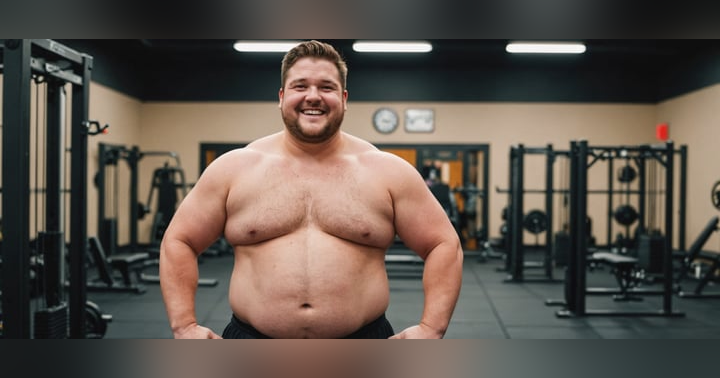The Hidden Queerness of Horror: Unmasking the Genre’s LGBTQ+ Roots

The Only Thing Scarier Than Straight People is Queer Horror Stereotypes
In recent years, there has been a noticeable rise in LGBTQ+ representation in film, including the horror genre. However, the connection between horror and queerness is not a new phenomenon. It has been present for centuries, often lurking beneath the surface of some of the most iconic and influential works.
The Origins of Horror
The horror genre, as we know it today, has a rich history that dates back to the 18th century. According to Britannica, the horror literary genre was invented by Horace Walpole, who published The Castle of Otranto in 1764.
This novel is often considered the first horror story as a legitimate literary form. A few decades later, Mary Wollstonecraft Shelley introduced elements of pseudoscience with her 1818 novel Frankenstein, a work that would become a cornerstone of the genre.
As the 19th century progressed, authors like E.T.A. Hoffman and Edgar Allen Poe began incorporating themes of reason and madness, adding psychological depth to their horror stories.
This era also saw a strong Gothic influence in horror, characterized by dark and picturesque settings, melodramatic narratives, and an atmosphere of mystery, fear, and dread. Classic novels like Sheridan Le Fanu’s The House by the Churchyard, Wilkie Collins’s The Moonstone, and Bram Stoker’s Dracula are prime examples of this Gothic tradition.
The Queerness in Horror: A Historical Perspective
So, where does the LGBTQ+ connection come in? While recent films feature openly gay characters, queerness has always been embedded in horror, albeit in coded and subtextual forms. This connection is deeply rooted in the genre's themes of otherness, secrecy, and the monstrous, which often mirror the societal views and experiences of LGBTQ+ individuals.
One of the earliest examples of this can be traced back to The Castle of Otranto, which WhatToWatch.com describes as "dripping in homoeroticism.” The novel's exploration of secret fears and forbidden desires aligns with the concept of the Gothic unspeakable, a term coined by Eve Kosofsky Sedgwick in her 1985 book Between Men: English Literature and Male Homosocial Desire.
This concept reflects the 18th-century emergence of homosexuality as a recognized identity and the subsequent social tensions that seeped into literature, often manifesting as fears of exposure and the struggle for sexual expression.
Horace Walpole himself was accused of being effeminate. While there is no concrete evidence of his homosexuality, letters reveal his intimate relationships with men that some describe as romantic and homoerotic.
This queer subtext is echoed in the works of other Gothic authors, including Matthew Lewis, William Thomas Beckford, and Francis Lathom, whose sexualities also influenced their writing.
Queerness Subtext in Early Horror Literature
Horror's relationship with queerness is further illustrated by examining key works and their creators. Mary Shelley, the author of Frankenstein, is speculated to have been bisexual, and her exploration of themes like repressed desire and the monstrous otherness of her creature can be seen as a reflection of her own complex sexuality.
In 1872, Joseph Sheridan Le Fanu's Gothic novella Carmilla broke ground with its tale of a female vampire, published 26 years before Dracula and often cited as Bram Stoker's inspiration. The story follows Lucy, a lonely teenage girl in Austria, who befriends the alluring Carmilla, only to discover she's a vampire.
The relationship between the two is charged with a subtle but palpable homoerotic tension, as seen in passages where Carmilla's affection overwhelms Lucy. Despite being labeled a monster, Carmilla evokes sympathy, reflecting the constraints of 19th-century societal norms and the repression of female desire.
Additionally, there has been speculation that Bram Stoker, the author of Dracula, had close relationships with other men and wrote letters to Walt Whitman that expressed deep admiration and affection, hinting at his own possibly queer identity.
Queer Influence in Early Horror Cinema
Moving into the realm of cinema, the influence of queer creators becomes even more apparent. F.W. Murnau, the director of the 1922 silent film Nosferatu, was a closeted gay man, and James Whale, who directed the 1931 film Frankenstein and its sequel Bride of Frankenstein, was openly gay.
Whale's films are often noted for their camp elements and subtle queer subtext, particularly in the character of Dr. Septimus Pretorius, who is widely believed to be a coded representation of a gay man. While queer elements had begun appearing in cinema, homosexuality still wasn’t socially acceptable.
As a result, the Motion Picture Production Code imposed strict guidelines on Hollywood films from 1934 to 1968, effectively censoring any depiction of homosexuality. Despite this, some horror movies found ways to challenge these restrictions.
One example is Dracula's Daughter (1936), a film about a woman seeking help from a psychologist to cure her "unnatural" urges, which involve seducing female victims, admiring their bodies, and then draining their life force.
Another is The Haunting (1963), based on Shirley Jackson's novel The Haunting of Hill House. The film features Theodora, a lesbian character whose sexuality is subtly mentioned in the novel but more explicitly portrayed in the movie. This depiction was significant for its time, as Theodora was shown as feminine and not predatory, a rare representation in Hollywood.
Queer-Coded Villains: A Horror Trope That Needs to Die
In many of the horror stories and movies we've discussed, queer-coded characters often end up as the antagonists. This trend isn’t confined to horror; it extends to other genres as well. For example, Disney villains are frequently discussed for their flamboyant, queer-coded characteristics. While these characters are iconic, they’re also clearly depicted as the "bad guys."
Moreover, the rise of queer-coded villains reflects the genre's complex relationship with queerness. While these characters are often the antagonists, their flamboyance and otherness resonate with LGBTQ+ audiences, who see aspects of their own identities reflected in these depictions.
However, screenwriter Alyson Richards states that this realization inspired her to write the indie horror film The Retreat, which centers on a lesbian couple who book a weekend getaway at a cabin, only to be abducted and tortured by a mysterious figure who live-streams gruesome killings of gay people for profit.
In recent years, there has been a significant shift in how queer characters are portrayed in horror. Films like Knife + Heart (2018), Freaky (2020), and the Fear Street Trilogy (2021) feature openly gay characters and explore LGBTQ+ themes without the stigma or subtext that characterized earlier works. These films represent a new era of horror, where queerness is celebrated rather than hidden.
Evolving from Hidden Subtext to Bold Representation
The horror genre has always been a hallowed ground for exploring themes of otherness, fear, and the unknown. Today, it is evolving to include more explicit and diverse representations of LGBTQ+ characters, but the roots of queer horror run deep, connecting the past to the present in a way that continues to resonate with audiences. As we look to the future of horror, it's clear that the genre's embrace of queerness will only continue to grow, offering new and exciting possibilities for storytelling.
And remember. Every day is all we have, so you've got to make your own happiness.
For more information on this topic, listen to Episode 28. Gay Horror.
Tune into your favorite podcast player every Tuesday for new episodes of A Jaded Gay.


















